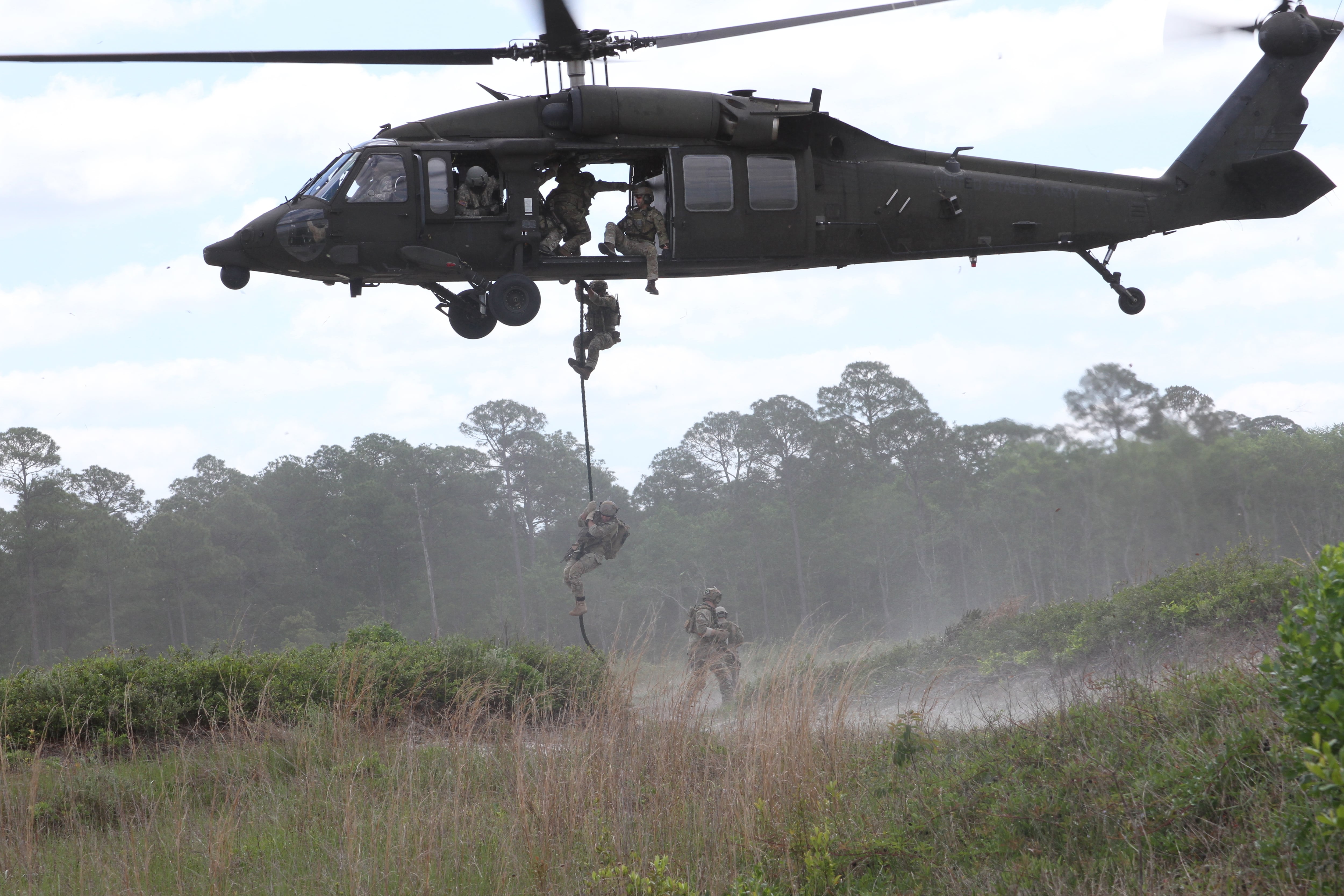AUSTIN, Texas — Air assaults. They’re some of the most challenging operations to plan and communicate down the chain of command.
Planners have to coordinate across different brigades to know what aircraft are available and when — and that’s not counting other considerations like land, manifest building and timelines.
And thanks to AIRSYNC, a new application from uniformed coders and software developers at the Army Software Factory, some of that process is now centralized and automated to make life easier for planners and leaders.
Army Times spoke with the developers behind the application Monday while visiting the facility, housed in a recently-renovated historic school that’s also home to an Austin Community College facility. Army Times agreed not to name individual developers so they could speak candidly.
One of Airsync’s developers, a field grade officer, explained that 101st Airborne Division senior leadership approached the Software Factory and asked for help standardizing and automating the “painful” air assault planning process, which frequently falls onto battalion-level staff officers who are already stretched thin.
Division officials lamented that “we relearn [the planning process] and it always seems to just barely come together near the end of the planning periods,” the developer recounted. But it wasn’t clear why.
After visiting units at Fort Campbell and elsewhere to investigate further, developers realized that units weren’t tracking performance or memorializing what worked (or what didn’t), they weren’t effectively communicating mission changes in a timely manner and they didn’t have standardized training or products available for the battalion air planners.
Often, mission requirements and resources change at the last second, the developer said, making it difficult to keep everyone in the loop.
“It’s a lot of coordination of information, structuring it and communicating it out in near real time,” explained the developer. As the system currently stands, planners lean heavily on a combination of tools like Sharepoint, network drives and email to get info out, which can lead to confusion over where current information is located.

AIRSYNC attempts to address many of those issues by creating a standardized format for air assault mission plans all hosted on a web application that everyone involved can access. The app supports real-time updates to the plan, too.
The application’s user interface is intended to communicate a bare bones version of the plan as quickly as possible, the developer explained, so that subordinate units have as much time as possible to complete their portion of the planning process. A recent update added a manifest feature that allows units to assign troops to specific aircraft by whatever format they prefer — battle roster number, last name or even an abbreviated identification number.
While AIRSYNC currently only can be accessed from a government network, the developers are hopeful that it can help standardized information quickly travel down the chain of command. Units will also easily be able to store and access previous mission plans which are stored in the application’s cloud hosting, allowing for self-assessment and performance tracking.
The AIRSYNC team isn’t sure yet what features might come out next, but one of its developers indicated that finding a way to get the aviation units onto the app is one idea.
Also potentially in the works? Airborne mission planning.
“There’s a lot of crossover...with airborne mission planning...it’s just a fixed wing asset,” said the developer. He added that the Software Factory team is evaluating whether a solution would be most effective as part of AIRSYNC or as a separate app.
Davis Winkie covers the Army for Military Times. He studied history at Vanderbilt and UNC-Chapel Hill, and served five years in the Army Guard. His investigations earned the Society of Professional Journalists' 2023 Sunshine Award and consecutive Military Reporters and Editors honors, among others. Davis was also a 2022 Livingston Awards finalist.




